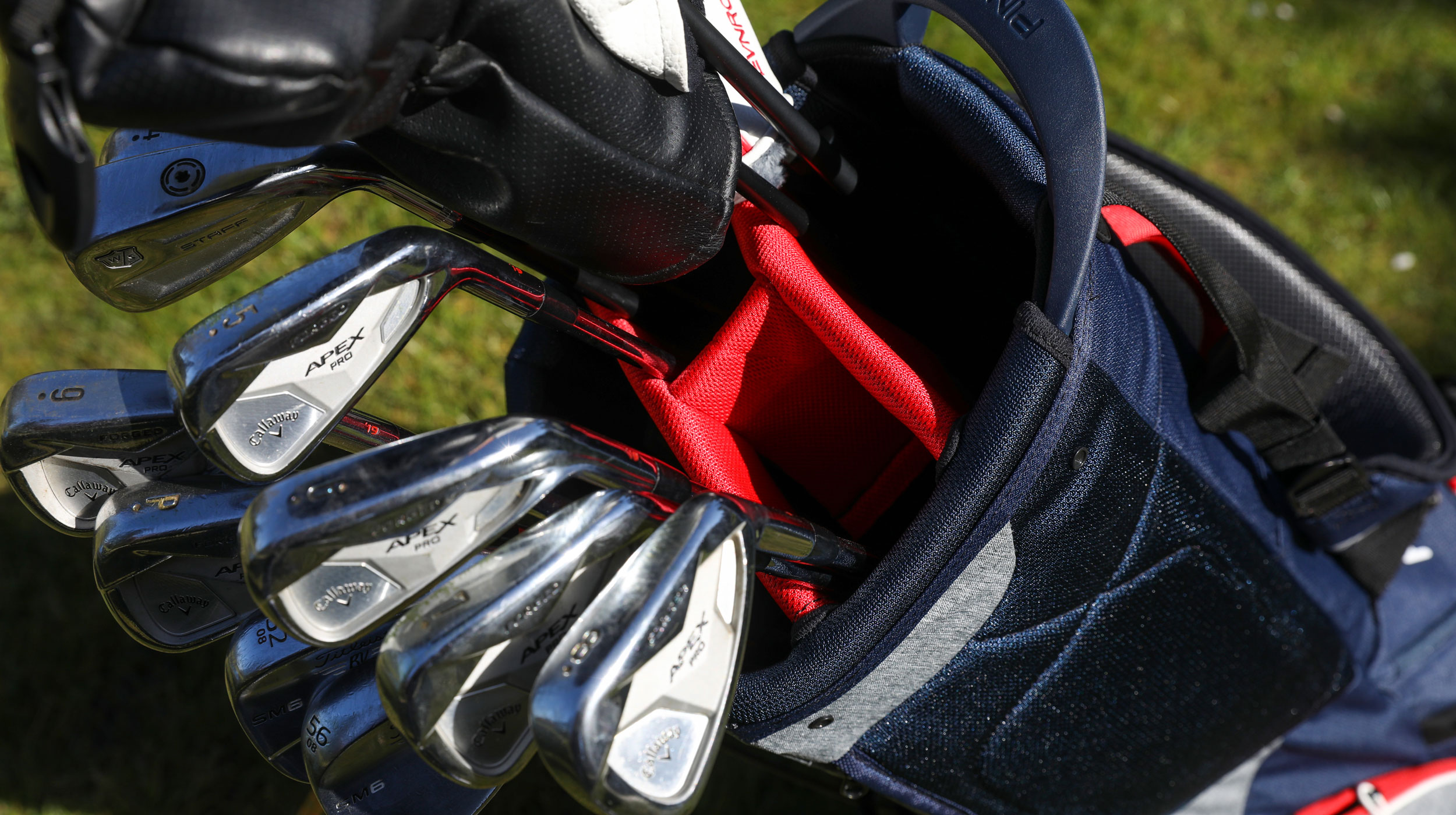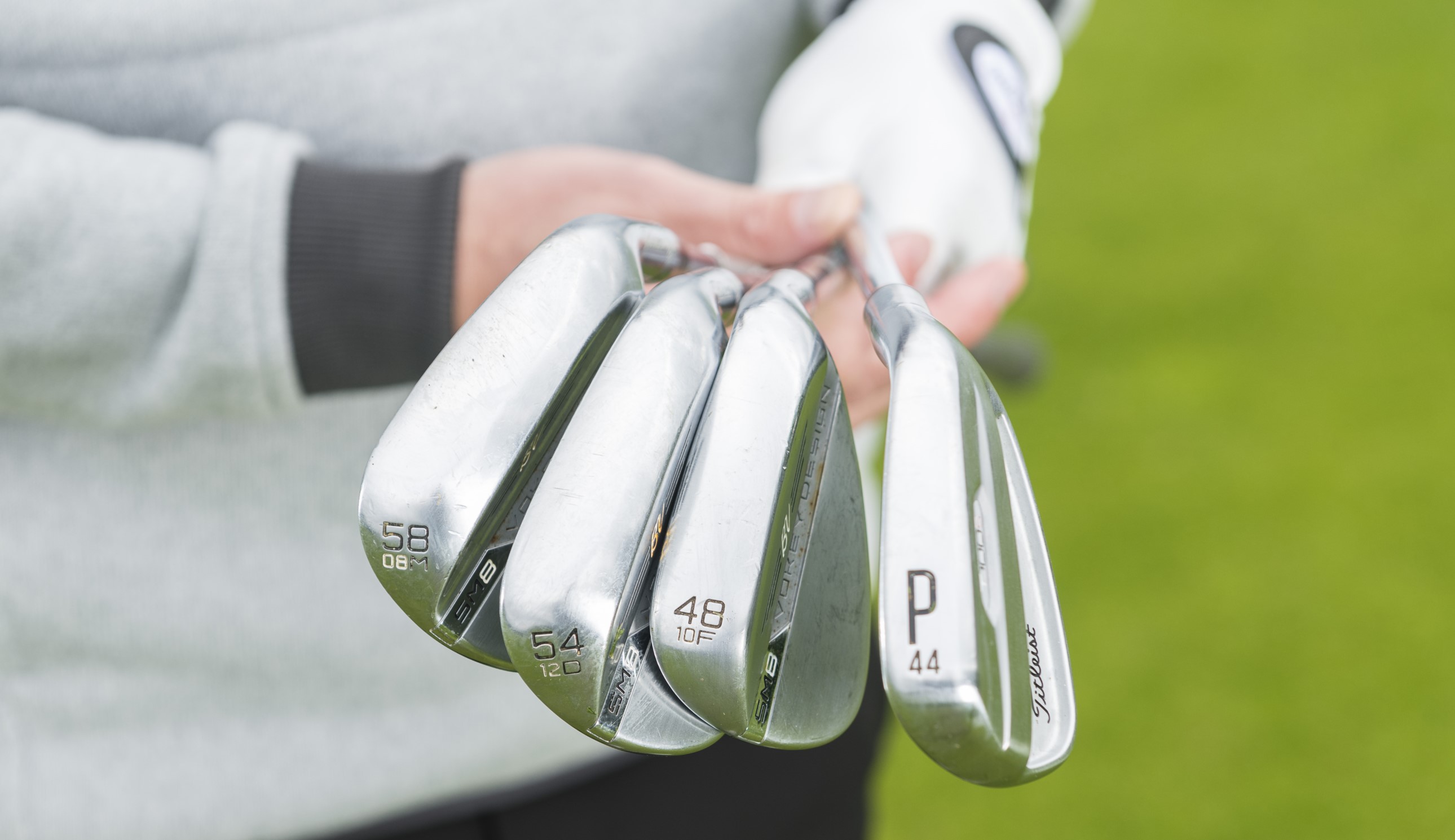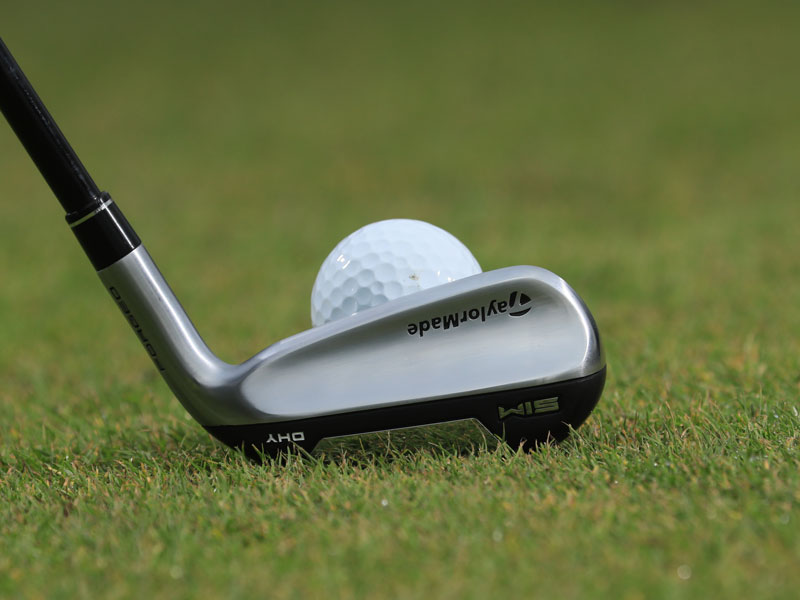What Iron For What Distance?
Improve your distance control and get more length from your irons

Sam Tremlett

What Iron For What Distance?
Professional golfers have an exact yardage for each iron in their bag. They may get to use the best golf irons in the business but irrespective of that, their iron play is so good because with a good swing in neutral conditions they know precisely how far the ball will carry with each of their irons.
With that information they can work out what iron for what distance. But it’s rarely as simple as – “A full 8-iron goes 150 yards. Ah, I have 150 yards: 8-iron then.” There are multiple factors to consider – Is the shot up or downhill? Is the wind hurting or helping? Will the ball run when it hits the ground? How much? What’s the air temperature? In colder conditions the ball won’t fly as far… What’s the altitude? If you’re higher up, the ball will fly further.
There’s a huge amount to factor in. But the starting point for knowing what iron for what distance is to work out that base number – how far does each of your irons go in neutral conditions.
Many amateurs overestimate how far they hit the ball and base the distance they hit each iron on how far they once hit it. “Oh yes, I got on that 165-yard par-3 with an 8-iron.” But there was a 30mph wind behind and the ground was rock hard, and the ball bounced on from 15 yards short...
Every golfer, of any ability, can and should spend some time on the practice ground, at the driving range or in a simulator, working out how far each iron actually goes. Hit 10, 20, 30, however many you like, shots with each iron (perhaps in a few separate sessions) and make a note of the distance each one touches down (you want to know how far the ball carries, not how far it rolls out to).
Take out the real rogue bad ones and then calculate the average. After a little work, you’ll have numbers at your disposal that could really help you improve distance control and shoot lower scores. Below we go through the bag, from short end to long end, to give an idea of; what iron for what distance? How far does the average amateur hit each club, what factors might influence the iron you hit and how you might hit your irons further.
Subscribe to the Golf Monthly newsletter to stay up to date with all the latest tour news, equipment news, reviews, head-to-heads and buyer’s guides from our team of experienced experts.

Working out how far your wedges and irons go is a good place to start
Wedges
Knowing what wedges to hit from what distance is hugely important to good scoring. Dustin Johnson has proven the importance of wedge play in recent years. By working out exactly how far each of his wedges flies using a quarter, half, three-quarter and full swing, he has a strong selection of shots at his disposal to cater for different distances. It’s a key reason why he’s risen to World Number 1 and became 2020 Masters champion during his career.
You might not hit it as far as DJ, but you can do the same thing in terms of analysis. Work out how far you hit each of your wedges with a full shot, then work your way in: How far with a three-quarter swing? Half swing; Quarter swing. For most amateurs, wedges come into play from 100 yards and in.
Better players will hit a pitching wedge a little further than that. If you carry three wedges – Say pitching wedge (generally with a loft of around 46 degrees), a 52 degree and a 58 degree wedge, you can create a matrix of yardages that will give you a number of shot options. To give you an idea – The average amateur hits their full pitching wedge roughly 105 yards, a 52 degree 88 yards and 58 degrees 75 yards.
Mid Irons
According to a recent R&A study, the average amateur hits their 7-iron 133 yards. Not all 7-irons are alike mind you, and that goes for all irons in the bag. 25-years ago, the loft of a 7-iron would have been roughly 35 degrees, but some sets now have a 7-iron with less than 30 degrees of loft.
Players’ irons – the best golf blade irons or compact irons – often have weaker lofts than distance and game improvement irons. If using blades or compact irons, with a 7-iron loft of say 33 or 34 degrees, a standard strike will not go quite as far as it would with the game improvers which may have a 7-iron loft of 29 degrees.
Also, the most forgiving irons and the best game-improvement irons have technologies built in to help the ball travel further – perimeter weighting, a fast face, a low centre of gravity. Whereas the players’ irons will be designed to offer more in the way of control and workability. Basically though, whatever set of irons you’re using (4-iron to 9-iron) – The 4-iron has the least loft so will travel the furthest with the 5-iron next furthest, and so on through the numbers.
If you’re playing a standard, flat shot in standard conditions, you should be able to work out (using the method described above) how far each of your irons will carry and so know what iron for what distance. But remember to factor in the conditions. Sometimes you might need to take a stronger iron to counter a headwind or vice versa. You may choose to play a knocked down, softer shot with a longer iron to run the ball into a green if conditions dictate that. Keep your options open.
Long Irons/Utility Irons
Long irons are generally considered the hardest golf clubs to hit with consistency. But, for better ball-strikers, they can be a versatile option. When it comes to considering what iron for what distance, the long irons are generally for the longer shots – When you have around, or just under, the 200-yard mark to go or are looking to place one on the fairway from the tee. But, with minimal loft, the long iron can also be a useful weapon to punch under trees or to keep the ball low under the wind.
At the top end of the bag, many will choose to replace the long irons with utility irons or driving irons – more forgiving and more powerful clubs that give more distance. The best utility irons golf clubs function as an alternative to a hybrid offering a degree of control, together with that increased power.

Gain More Distance With Your Irons
If you’re looking to hit your irons further, there are a few options available. Firstly, you could improve your technique. A series of lessons could help you find a more efficient swing that generates greater clubhead speed and so greater distance.
Alternatively, you could do a Bryson DeChambeau and work on your strength and fitness. If you’re more flexible, more agile and more powerful, you will hit the ball further. There are various exercise programs for golf that could help you achieve this.
If those methods don’t sound appealing, don’t worry. There’s technology that could help you out too. There are plenty of iron sets that have been designed with generating greater distance in mind – As mentioned above, they may have stronger lofts to produce a more powerful ball flight. Or, they may have fast and flexible club faces to generate maximum ball speed, or strategic weighting to get the ball launching high and with max power.
Alternatively, consider the shaft – A lightweight, flexible shaft (maybe graphite) can help you generate greater speed through the ball and hit it further. Finally, thinking about switching out your long irons and replacing with more powerful utility irons or driving irons.
For all the latest equipment news and reviews, check out the Golf Monthly website.

Fergus is Golf Monthly's resident expert on the history of the game and has written extensively on that subject. He has also worked with Golf Monthly to produce a podcast series. Called 18 Majors: The Golf History Show it offers new and in-depth perspectives on some of the most important moments in golf's long history. You can find all the details about it here.
He is a golf obsessive and 1-handicapper. Growing up in the North East of Scotland, golf runs through his veins and his passion for the sport was bolstered during his time at St Andrews university studying history. He went on to earn a post graduate diploma from the London School of Journalism. Fergus has worked for Golf Monthly since 2004 and has written two books on the game; "Great Golf Debates" together with Jezz Ellwood of Golf Monthly and the history section of "The Ultimate Golf Book" together with Neil Tappin , also of Golf Monthly.
Fergus once shanked a ball from just over Granny Clark's Wynd on the 18th of the Old Course that struck the St Andrews Golf Club and rebounded into the Valley of Sin, from where he saved par. Who says there's no golfing god?
- Sam TremlettSenior E-commerce Editor